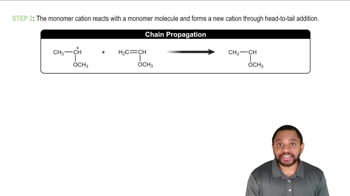What stereoisomers are obtained from the following reactions?
c. (E)-3-methyl-2-pentene + HBr
d. cis-3-hexene + HBr
 Verified step by step guidance
Verified step by step guidance Verified video answer for a similar problem:
Verified video answer for a similar problem:



 4:07m
4:07mMaster General properties of hydrohalogenation. with a bite sized video explanation from Johnny
Start learning